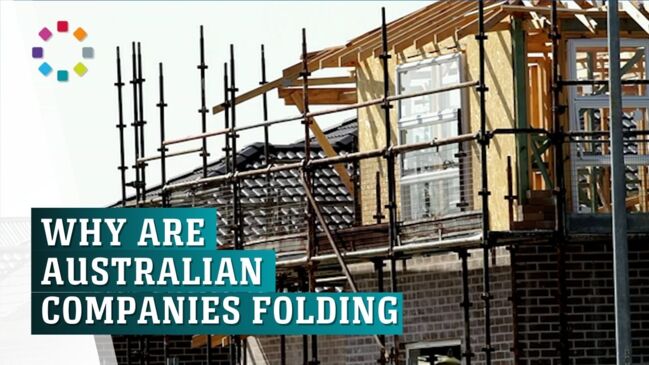Grim ad shows Australian cafe habit is dying
An industry that was once part of the Australian dream is now on its knees as customers turn their back on what was an essential part of life.

ANALYSIS
Your favourite place for eggs on toast is scrambling to stay alive as a wave of insolvencies hits the hospitality industry, sending businesses to the wall.
There’s a For Lease sign hanging in the window of the cafe around the corner from my house. I had noticed the place wasn’t too busy any more and I guess the owner realised it didn’t make sense to keep losing money.
As the next chart shows, it’s the worst time in years to be a muffin slinger. They are going broke left and right.
In the pandemic, cafes got a lot of free money from the government and people spent at their local. Insolvencies were low. But now government money has run out, and customers are shutting their wallets. Hospitality businesses just can’t survive and a huge number of them went into administration last month.
With high interest rates, mortgage holders are having cups of tea at home instead of going out for a ham and cheese croissant. The high price of fuel is also diverting spending away from drinks and towards diesel.
As the next chart shows, Australian spending on cafes and restaurants has stalled at about $5 billion a month. That’s despite rising prices, which implies cafes are selling fewer items. And given that the population is bigger than it was a year ago – quite a lot bigger in fact – the fact that spending has stalled is quite significant.
Running a cafe is a dream many of us have had at some point. Those who left it as a dream are probably the happiest. The reality is often a bit of a nightmare. Just look at the cost increases that businesses have had to deal with.
The next chart shows inflation in a few basic goods that a cafe sells. The price of bread and other foods are through the roof, meaning cafe owners have to pass on price hikes to customers or suffer a loss of margins. And those margins are how they pay the electricity bill, which has, by the way, gone up.
(Food n.e.c means “not elsewhere classified” and includes my favourite kind of gluten free brownies, etc.)
Where does it all go?
When a hospitality business goes broke they have to get rid of a lot of stuff. So it is that the auction houses are stuffed full of equipment right now.
If you’re crazy enough to start a new cafe right now – and I would not recommend it – please don’t be crazy enough to buy your equipment new. The misfortune of the generation of cafe owners who went before you should be your good fortune if you buy your stuff second hand.
Fitting out a kitchen new is expensive, but when you go second-hand you can do it on the cheap. You’re going to want to save every dollar you can save, I reckon, because there’s going to be weeks where you just don’t sell as many coffees as your business plan projected, and you still need to pay wages.
The bad news for cafe owners – both the optimistic new ones and the bitter, jaded ones who’ve seen it all – is inflation is looking pretty sticky. The most recent three months have seen inflation going up not down, as the next chart shows. This is a similar pattern to what has been seen overseas and it’s very disappointing.
Forecasts that the RBA was going to be showering us all with rate cuts soon have been torn up and thrown in the bin. Rate cuts are a way off now.
That means a longer period of tight budgets for households, fewer people ordering the big breakfast, and more cafes that fail.
Ultimately this is all part of the RBA’s plan. An economy with low rental vacancies and more-than-full-employment is one where costs keep rising. To bring down inflation they need to tip a few more people into unemployment and create a few vacant shopfronts on the streets of our suburbs.
That part of the plan is working, it seems. Now we just need the results to start showing up in lower actual inflation.
Jason Murphy is an economist | @jasemurphy. He is the author of the book Incentivology.



